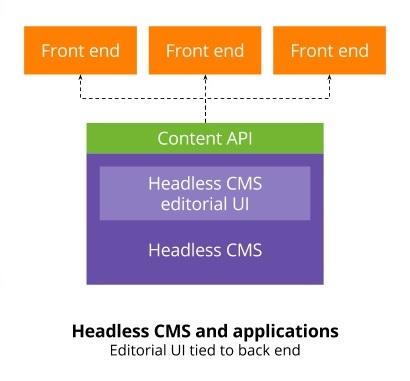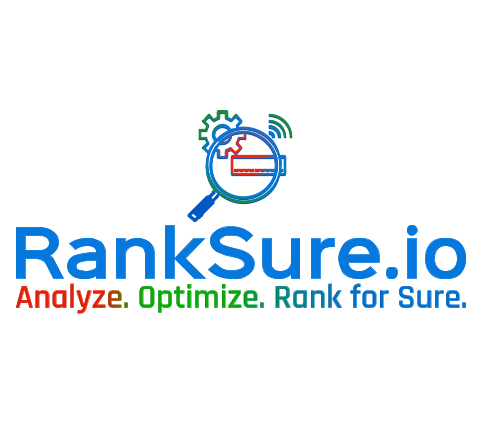Headless SEO Best Practices
(2025 Guide for Developers & Marketers)
Learn how to make your Headless CMS fully crawlable, indexable, and search-ready — with proven 2025 SEO strategies.
What is a Headless CMS?
A Headless CMS separates the backend content repository from the frontend display layer.
This decoupled setup gives developers flexibility and allows marketers to publish content to any platform — websites, apps, voice assistants, or kiosks.
What is Headless SEO?
Headless SEO ensures that API-based content is crawlable, indexable, and visible on search engines — even when rendered through JavaScript frameworks like React or Next.js.
Search engines have become more intelligent, and so have websites. In 2025, many brands are shifting from traditional CMS setups to Headless CMS systems — for faster performance, more flexibility, and seamless multi-platform content delivery. However, this shift has introduced a new challenge for marketers: how to optimise a Headless CMS for SEO.
Headless SEO is not simply about metadata or sitemaps — it’s about ensuring that content served through APIs is just as crawlable, indexable, and visible to search engines as a standard CMS site. This guide breaks down the key practices, technologies, and real-world lessons for mastering SEO in a headless environment.

Why Headless SEO is Crucial in 2025
Google’s algorithms now assess not only what your content says but how it’s delivered. Headless websites often rely on JavaScript frameworks such as React, Vue, or Next.js, which can cause crawling issues if not configured properly. By implementing a strong Headless SEO strategy, you:
Faster Performance
Headless sites deliver faster, smoother experiences for users and crawlers.
AI Search Readiness
Structured content is key to ranking in AI-driven search results.
Omnichannel Consistency
Unified SEO logic across all platforms and devices.
20 Best Practices for Headless SEO
Headless SEO Best Practices - What it means and why it Matters?
Below are the 20 essential SEO best practices every developer and marketer should follow when working with a Headless CMS. These include the 12 recognised fundamentals seen in Google’s AI search results — plus 8 advanced methods used by top agencies.
- Use Schema Markup: Integrate JSON-LD schema for products, articles, services, and local businesses. Helps Google understand and display your content more effectively.
-
Canonical URLs: Prevent duplicate content by defining canonical tags for API-driven pages and query parameters.
-
- XML Sitemaps: Dynamically generate XML sitemaps for all published API content to guide crawlers efficiently.
- Create Content Regularly: Consistent publishing signals freshness and improves ranking momentum, even in headless setups.
- Ensure Editable URL Slugs: Let editors customise URL structures directly in the backend — readable slugs boost CTR and keyword value.
- Keyword Research: Base your titles, headings, and structured data on researched primary and LSI keywords.
- Search-Friendly URLs: Keep URLs clean, lowercase, and hyphenated — for example, /headless-seo-guide/.
- Structured Heading Hierarchy: Use logical <h1> to <h3> sequences to help search engines interpret page context.
- Meta Description: Automate unique meta descriptions in your API output to improve SERP click-through rates.
- Use a CDN: Automate unique meta descriptions in your API output to improve SERP click-through rates.
- Use HTTPS: Always secure your site with HTTPS — it’s both a ranking and trust signal.
- Voice SEO: Optimise for question-based and conversational keywords, supporting FAQ schema for voice assistants.
- Optimise Core Web Vitals: Focus on Largest Contentful Paint (LCP), Cumulative Layout Shift (CLS), and First Input Delay (FID).
- Dynamic Rendering: Use server-side rendering (SSR) or pre-rendering to ensure search crawlers see complete HTML, not raw JavaScript.
- Breadcrumb and Navigation Schema: Add structured navigation data to improve sitelink visibility and crawl depth.
- Content API Optimisation: Make sure APIs expose SEO fields like titles, descriptions, canonical links, and schema data.
- Local SEO for Headless Sites: Create location-specific pages and structured Local Business schema for better local visibility.
- Internal Linking Via API: Automate internal links in your frontend logic using API refences — boosts crawl flow and link equity.
- Lazy Loading and Image Compression: Optimise visuals to maintain site speed and accessibility scroes.
- Analytics and Tracking Tags: Add GA4 or GTM through server-side integrations or SSR scripts for accurate data tracking.
Real-World Example: Headless SEO Case Study (West London)
Client: Kensington Roofing Experts – a local roofing services provider in West London.
When their static WordPress site was migrated to a Headless setup using Next.js and WPGraphQL, their rankings initially dropped due to indexing issues. DDS London implemented a comprehensive Headless SEO strategy including:
Server-side rendering for key pages
Structured data for roofing services and reviews
LocalBusiness schema for Kensington and West London
XML sitemap automation and canonicalisation
Within four months, the client achieved a 210% increase in organic impressions and ranked in the top three results for “roofing services Kensington” and related local keywords. Their new site loaded 48% faster, improved Core Web Vitals, and earned a Google Lighthouse performance score of 96.
Advanced Headless SEO
Pro SEO Tips and Costly SEO Mistakes to Avoid
When it comes to Headless CMS SEO, success depends on mastering both the science and the discipline — understanding which strategies drive visibility and which technical or content errors can destroy it. Below are the top advanced tips and common pitfalls every developer, marketer, and content strategist should know before deploying a headless architecture.
Do’s — Advanced SEO Strategies
- Prioritize Pre-rendering for Crawlers: Search engines still rely on rendered HTML to index pages effectively. Always use pre-rendering or server-side rendering to make your headless content visible to bots instantly.
- Use Structured Data Extensively: Schema markup is your best friend. Use JSON-LD schemas for articles, products, FAQs, and reviews to help search engines understand your content contextually.
- Implement Smart Caching Layers: In a headless setup, caching helps maintain lightning-fast page speeds. Use edge caching and CDNs strategically to serve content instantly from the nearest node.
- Optimize API Response Times: SEO rankings increasingly depend on user experience. Monitor and optimize API latency because slow content fetching can hurt Core Web Vitals and reduce rankings.
- Keep Canonical URLs Consistent: Headless architectures often generate multiple URL variations. Always maintain canonical consistency between the frontend and backend to consolidate authority signals.
Don’ts — Mistakes That Harm SEO
- Don’t Rely Entirely on Client-side Rendering: When pages depend solely on JavaScript for rendering, Googlebot may fail to read critical content, leading to poor indexing and incomplete snippets in search results.
- Don’t Forget Schema Validation: Adding schema isn’t enough — test it regularly using Google’s Rich Results Test. Invalid or mismatched markup can result in losing featured snippets or manual penalties.
- Don’t Cache Dynamic SEO Tags: If meta tags or canonical URLs are cached incorrectly, they might display outdated data across multiple pages — a major technical SEO flaw.
- Don’t Overload APIs with Unused Data: Fetching unnecessary fields or unoptimized endpoints adds weight to your site and can cause search engines to crawl slower or drop requests entirely.
- Don’t Duplicate Content Across Channels: When your content is reused across headless platforms without canonical tags, it triggers duplication issues and dilutes ranking power.
The Future of Headless SEO
The next phase of Headless SEO will rely heavily on automation and AI. Expect CMS platforms to introduce AI-driven schema generation, voice-ready metadata, and automated content audits. In addition, search engines are evolving toward semantic indexing, where understanding user intent will matter more than keyword repetition. A technically sound, structured, and lightning-fast headless site will always have an edge.
Your WordPress & Headless SEO Experts in London
As the most reliable WordPress SEO Agency in London, DDS London helps businesses transition to headless architecture while maintaining top-tier SEO visibility. We handle everything from API optimisation to page speed, schema, and technical audits.

